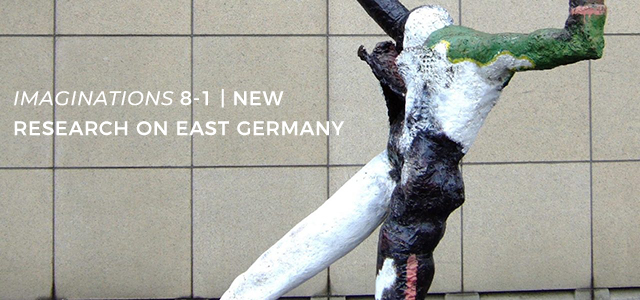Whose East German Art is This? The Politics of Reception after 1989
DOI:
https://doi.org/10.17742/IMAGE.GDR.8-1.6Abstract
Abstract | Beginning with an overview of painting in East Germany, this article examines the German-German Bilderstreit (image battle) of the long 1990s and two major art exhibitions in the new millenium, Kunst in der DDR (Art in the GDR, 2003) and Abschied von Ikarus(Farewell to Icarus, 2012-13). It ultimately argues that the history of East German art has been rewritten since unification in ways that reflect Western expectations and desires more than socialist realities, and shows how art historians, scholars of the German Democratic Republic (GDR, or East Germany), and those seeking alternatives to the neoliberal present can benefit from a less biased view. Résumé | Commençant par un résumé de la peinture en Allemagne de l’Est, cet essai examine la bataille de l’image allemande-allemande dans des longues années 1990 et deux grandes expositions d’art dans le nouveau millénaire, Kunst in der DDR (L’Art en la RDA, 2003) et Abschied von Ikarus (Adieu à Icarus. 2012-13). Il fait valoir en fin de compte que l’histoire de l’art est-allemand a été réécrit depuis l’unification d’une manière qui reflète les attentes et désirs occidentales plus des réalités socialistes, et montre comment les historiens de l’art, les chercheurs de la RDA, et ceux qui cherchent des alternatives au présent néolibéraux peuvent bénéficier d’une perspective moins préjugé.Downloads
Published
2018-04-20
How to Cite
Eisman, A. A. (2018). Whose East German Art is This? The Politics of Reception after 1989. Imaginations: Journal of Cross-Cultural Image Studies, 8(1), 78–99. https://doi.org/10.17742/IMAGE.GDR.8-1.6
Issue
Section
Articles
License

This work by https://journals.library.ualberta.ca/imaginations is licensed under a Creative Commons 4.0 International License although certain works referenced herein may be separately licensed, or the author has exercised their right to fair dealing under the Canadian Copyright Act.




